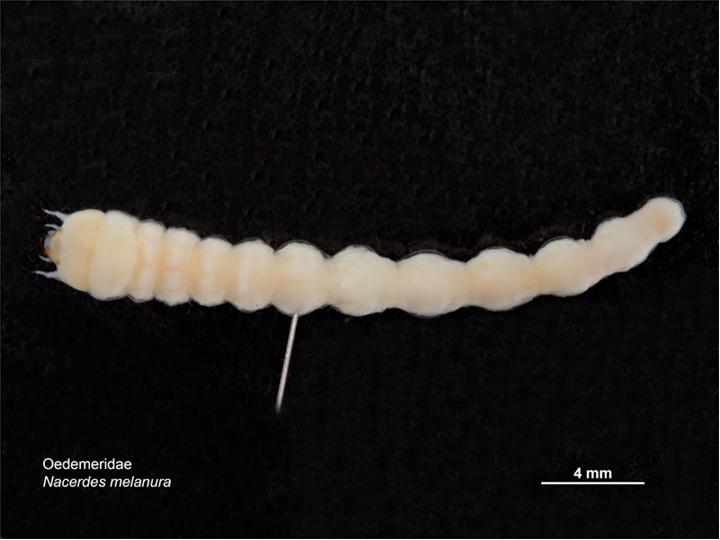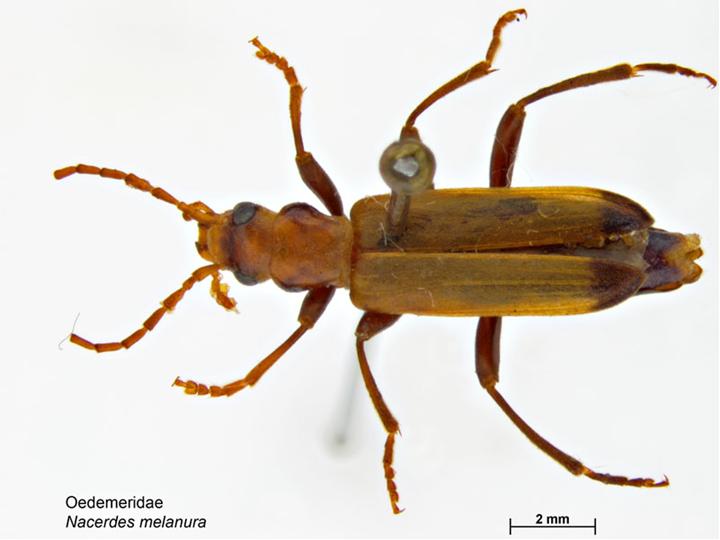Some of the nicest things about the older entomological literature are the short papers that record interesting observations. To some extent these almost seem like the blog posts of that era – reasonably short and pithy with some useful information as well. I really enjoy reading these short accounts, in part because of the interesting natural history information that they contain, and in part because they are often rife with potential research questions. The reality, of course, is that I have neither the budget nor the time to follow up on 99.9% of what can be found in these accounts. Nobody does. But, if nothing else, reading these short notes is a good exercise in brain stretching.

I recently came across one of these notes in the Journal of the Entomological Society of British Columbia. Since I edit this journal, I often end up browsing its pages, and this note by G.J. Spencer (1946) on wharf borers found in pilings in Vancouver caught my eye. It seems that Spencer was asked to take a look at some creatures that were found at the BC Sugar Refinery at the Port of Vancouver. The enquirer was worried that they were Teredo navalis, the naval shipworm. The shipworm is a mollusk, so undoubtedly Spencer was able to immediately identify that the samples were not shipworms but were, in fact, insect larvae. He identified them as Nacerdes melanura, the wharf borer.
Spencer, however, “(found) it hard to believe the details that accompanied (the specimens)”, and he indicates that he went immediately to the wharf. What were these details that initially had Spencer so incredulous? Well it seems that construction work was being done at the site, and the workers had uncovered some old pilings that had been driven about thirty years before. Prior to the pilings being driven, that part of the seafloor was filled with ash and soil. After the pilings were in place more fill was dumped on top of them, concrete was poured over that, and then some buildings were built on top of that foundation. The workers who Spencer encountered had been in the process of demolishing those buildings when they uncovered the old pilings and found the larvae. Spencer himself also dug larvae out of a “…thoroughly soggy piling in which the centre only was of firm though very wet wood.”
Assuming that the historical account received by Spencer at the worksite was correct, that means that the infestation had been in place for some decades with no possibility of later infestation once the concrete was poured. In way of further corroboration of this phenomenon Morris (1980) cites Laing (1936) who observed larvae in wood that had been encased in concrete for seven years. Spencer indicates two logical hypotheses that flow from observations such as these. First, that it is possible that the larvae were introduced to the pilings during initial construction, and the insects were able to complete multiple generations in the same material. Or, second, that it is possible that the larvae of this species can undergo very long diapause or at least very lengthy development when trapped in such a situation.

Either of these possibilities is, of course, interesting. So I dug around a bit more to find out about these strange creatures. However it turns out that the literature is rather sparse. They don’t seem to be major structural pests – which likely explains the rather low amount of research – although they do get mention as pests of wooden archeological artifacts. It seems that people mainly notice them (and call pest control professionals) when large numbers of adults occasionally burst onto the scene, often in damp basements or, interestingly, in the vicinity of toilets. There is no doubt that they like seawater-saturated wood, and saltiness may explain their association with urine as well.
Wharf borers have been documented just about anywhere that humans live. Because they seem to prefer saltwater-soaked timber, they usually are found at marine port cities. But that is not always the case as they have also been found far inland, and a substantial distance from seaports. Their seemingly ubiquitous presence associated with human activity has led to some debate about where they originate, and it is fair to say that centuries of shipping them all over the world have certainly tangled up that problem. But perhaps it is the sort of problem that could be worked out by some population genetics sleuthing.
Some recent work has shown that the larvae maintain enzymes that enable them to break down some components of wood. However it was not clear if those enzymes were from the insect itself or derived from fungi or other microorganisms associated with the larvae. Other papers that I’ve linked in this blog post speculate on whether the insect is digesting wood directly or if it is relying on, or even ingesting, associated microorganisms. That same recent study established that the larval period of the lifecycle is at least reasonable substantial and went some way to determining that temperature may signal the maturing insect to move from one stage to the next.
So it seems that we are dealing with some extremely hardy insects. They can live in the undoubtedly hypoxic environment of water-saturated and rotting wood. Besides that, the water that they prefer to soak their surroundings also has a high salt content. Somehow they are able to make a nutritional living in rotting wood that has undoubtedly has most of its easily available nutrients flushed out of it. And to top it all off, there is good evidence that they can spend at least a few years, if not decades, trapped inside of rotting timbers without further access to the outside world. It’s no wonder that these creatures have found ways to hitch rides with humans all over the world and then have settled in with us – usually mainly hidden from our sight – for the long haul.
Wharf borers are truly amazing little creatures, ones that deserve some further research attention. There are a lot of great questions here, and many of them represent some pretty low-hanging fruit.

are there beetle larvae (or any holometabolous insects) that can breed as larvae? (both sexes)
Neoteny is the phenomenon where sexually mature adults retain immature characteristics. There are some insects that do this. E.g.:
http://rspb.royalsocietypublishing.org/content/275/1646/2015